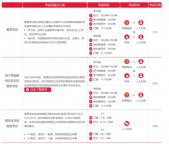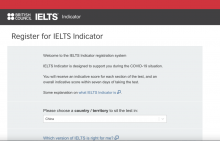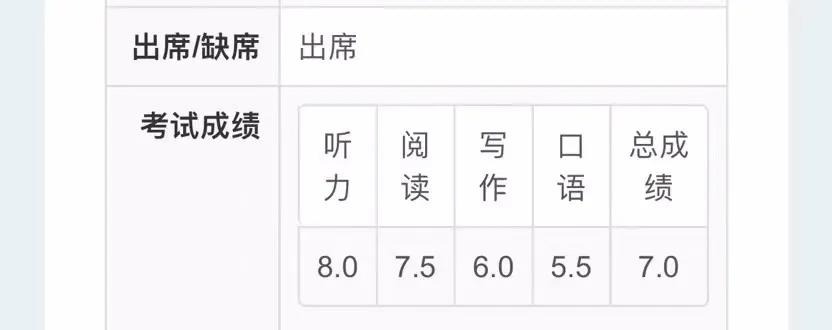【雅思精读】印度经济:富的更富,穷的更穷
【雅思精读】印度经济:富的更富,穷的更穷,*注:本文选自12月5日《经济学人》,本文我们一起来看看关于印度经济的一些内容,帮助大家更好的了解国外的资讯,同时积累更多的英语表达!
Compounding inequality
不平等加剧
India’s super-rich are getting much richer
在印度,富得越富,穷的越穷
Even as the economy shrinks by a tenth
即使经济萎缩了十分之一
1. SOME PEOPLE have almost all the luck. Over the past year, as India’s economy has shrunk by around a tenth and tens of millions of Indians have lost jobs or sunk into poverty, the fortunes of the country’s two richest people have swollen. Gautam Adani, whose conglomerate sprawls from ports to coal mines to food, has seen his personal wealth more than double, to some $32bn. Mukesh Ambani’s riches, which derive from oil refining, telecoms and retail, among other things, have grown by just 25%, albeit to an intimidating $75bn or so.
有的人运气一直很好。去年,印度经济缩水大约十分之一,数千万印度人失业,陷入贫困当中,而印度的两大首富财富却不断增加。高塔姆•阿达尼企业集团业务遍及港口、煤矿和食品等领域,他的个人财富翻了一番,达到约320亿美元。穆凯什•安巴尼收入主要来自炼油、电信和零售等行业,他的个人财富750亿美元左右,增长了25%。
2. The share of wealth and income going to the top 1% has been rising rapidly in recent years in India, as it has been in many countries. Last year they hoovered up 21.4% of earnings, just ahead of their counterparts in Russia, according to the World Inequality Database. Credit Suisse, a bank, puts their share of India’s wealth at 39%, well ahead of the richest1% of Americans or Chinese. Most alarmingly, in India some of the rich havebecome super-rich by using their heft to crush smaller competitors and thus corner multiple chunks of the economy. The tilt in fortunes has rewarded not so much technical innovation or productivity growth or the opening of new markets as the wielding of political influence and privileged access to capital to capture and protect existing markets.
与许多国家一样,印度最富有的1%人群在财富和收入中所占的比例近年来一直在迅速上升。根据世界不平等数据的数据,去年他们的收入增长了21.4%,略高于俄罗斯同行。瑞士信贷银行认为他们在印度财富中所占的比例为39%,远远超过美国和中国最富有的1%。最令人担忧的是,在印度,一些富人利用自己的影响力碾压较小的竞争对手,从而成为超级富豪,垄断了经济的多个领域。财富的倾斜所带来的益处,与其说是技术创新、生产率增长或新市场的开放,不如说是政治影响力的发挥和资本获得的特权,还有新市场的获取以及现有市场的保护。
3. Merely a decade ago, according to data compiled by Marcellus, an investment-advice firm, among listed firms in India the 20 most profitable generated less than a third of profits. They now account for 70%. A study by Krishna Kant, a journalist, reveals that between 2014 and 2018 competition within ten different industries, from aviation to tyres, deteriorated markedly.
根据投资咨询公司Marcellus汇编的数据,仅仅在十年前,在印度上市公司中,利润最高的20家公司所创造的利润还不到三分之一,而如今是70%。记者Krishna Kant的一项研究显示,2014年至2018年间,从航空业到轮胎业等十个不同行业的竞争明显恶化。
4. Across Indian markets, only the shares of giant firms have gained consistently over the past decade, says Rohit Chandra of IITDelhi, a university. International investors have noticed, and now bet increasingly not on promising new firms but on big old ones, which they expect to get even bigger. The government boasts that the five months from April to August saw a record $36bn in foreign investment, suggesting that its wise policies have sustained confidence during the covid-19 epidemic. What it trumpets less loudly is that more than half of that money, including hefty investments from Facebook and Google, poured into Mr Ambani’s hands alone.
印度德里大学的罗希特•钱德拉表示,在过去的十年里,印度市场上只有大型企业的股票持续上涨。国际投资者已经注意到了这一点,他们现在不再把赌注押在前景很好的新公司上,而更加关注那些会变得更大的老公司。政府称,从4月到8月的5个月里,外国投资达到创纪录的360亿美元,表明其政策在新冠疫情期间起了作用,政府没有说的是,这其中一半的资金包括来自脸书和谷歌的投资,都流入了安巴尼的口袋。
5. It is easy to understand why. Things have a way of turning out as Mr Ambani wishes. Back in 2016, for instance, the tycoon used his massive earnings from petrochemicals to take a $25bn gamble, plunging into the maturing mobile-phone market. His timing was exquisite. Just as he rolled out a free service to lure customers, the government withdrew 86% of the country’s paper currency, leaving most of India strapped for cash and eager to find savings. Rival companies also found themselves burdened by lawsuits and crushing penalties for back taxes. Regulators ignored complaints. “If his firm were Chinese it would have been charged with dumping,” says one economist.
原因很容易理解。一切都会像安巴尼所想的那样。早在2016年,安巴尼就利用他从石化行业获得的巨额利润进行了一场250亿美元的赌博,进军成熟的手机市场。他的时机把握得非常好。就在他推出一项,免费服务以吸引顾客的时候,印度政府撤出了86%的纸币,这使得印度大部分地区现金短缺。竞争对手被诉讼和补缴税款的沉重罚金所累,监管机构对一切投诉置之不理。一位经济学家说:“如果是在中国,他会面临倾销指控。”
6. Mr Adani enjoys a similar Midas touch. In early 2019 his group, which controls around a quarter of India’s port capacity, ventured into a new field when the government tendered six 50-year airport-management contracts. Competing against established firms, Mr Adani nevertheless won all six. He has since bought two more, including a 74% share in Mumbai airport, India’s second-busiest. More recently, Mr Adani has counterbalanced big stakes in coal-fired power with lots of renewable energy, winning a $6bn government contract in June for various solar projects. The share price of Adani Green Energy, a subsidiary, has risen tenfold since March.
阿达尼也有类似点石成金的本领。2019年初,他的集团进入了一个新领域,政府竞标了六份为期50年的机场管理合同。该集团控制着印度约四分之一的港口运力。尽管与老牌公司竞争,阿达尼还是赢得了全部6个项目。此后,他又收购了另外两家机场,其中包括印度第二大机场孟买机场74%的股份。最近,阿达尼用大量可再生能源来平衡燃煤发电的巨大股份,今年6月,他赢得了一份60亿美元的政府合同,负责多个太阳能项目。自3月份以来,子公司Adani Green Energy的股价已经上涨了10倍。
7. Some of India’s tycoons have prospered because they have learned not just to weatherunpredictability, but to game the system. That system, alas, is failing India’s poor. Measures ofmalnutrition and stunting reveal an alarming backward slide over the past year. The unemployment rate shows some recovery from the worst of the covid shock, but that fails to capture the astonishing bleakness of India’s labour market. Before covid hit, barely 40% of adults were in paid work, according to the Centre for Monitoring the Indian Economy, a research firm. Now only 36% are. The rest, including legions of housewives, see no point in even looking for a job.
印度的一些大亨之所以能够兴旺发达,是因为他们不仅学会了应对各种未知,还因为他们懂得如何利用体制。唉,印度体制让穷人深受其累。不良发展的指标显示,过去一年出现了令人担忧的倒退。新冠依赖,虽然失业率有所下降,经济有所复苏,但是印度劳动力市场仍然低迷。根据研究公司印度经济监控中心的数据,在新冠爆发之前,仅有40%的成年人有带薪工作。如今,只有36%。其余的人,包括大量的家庭主妇,认为甚至找工作都没有意义。









